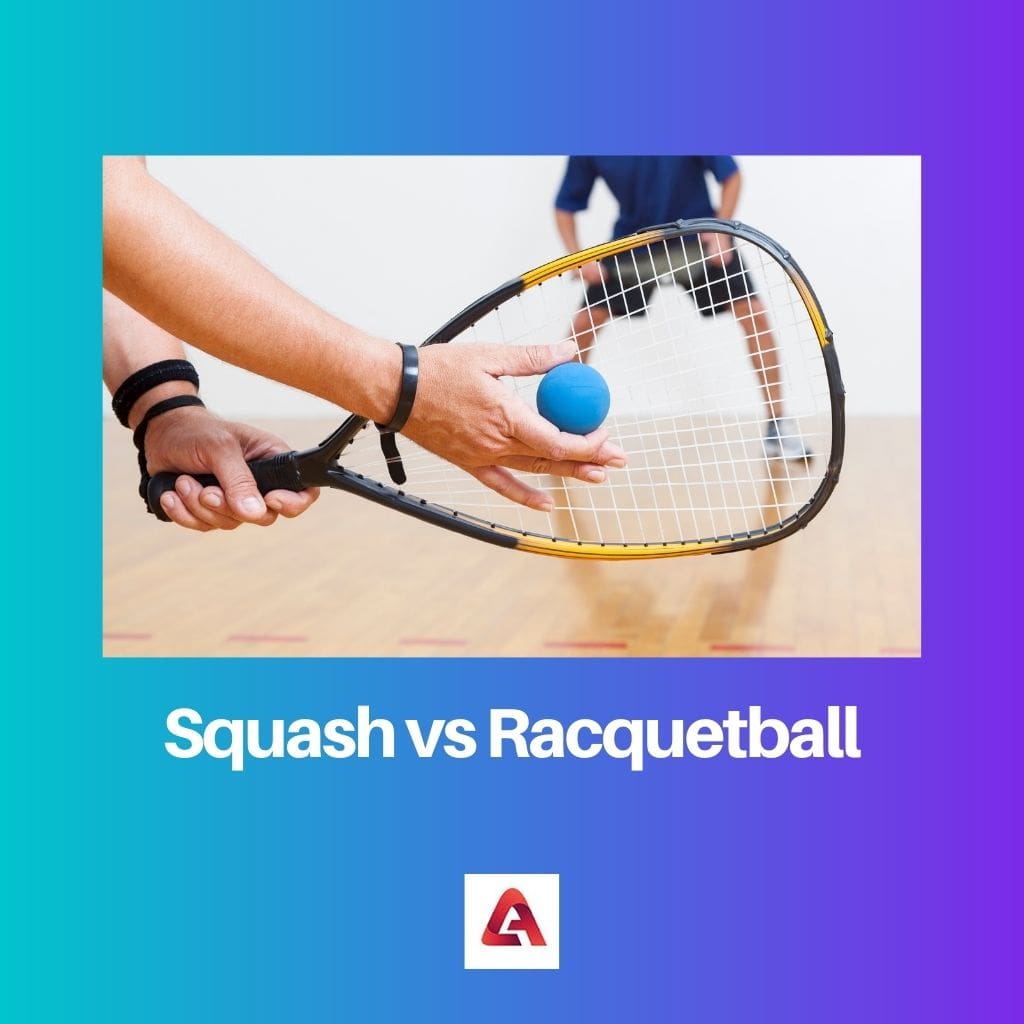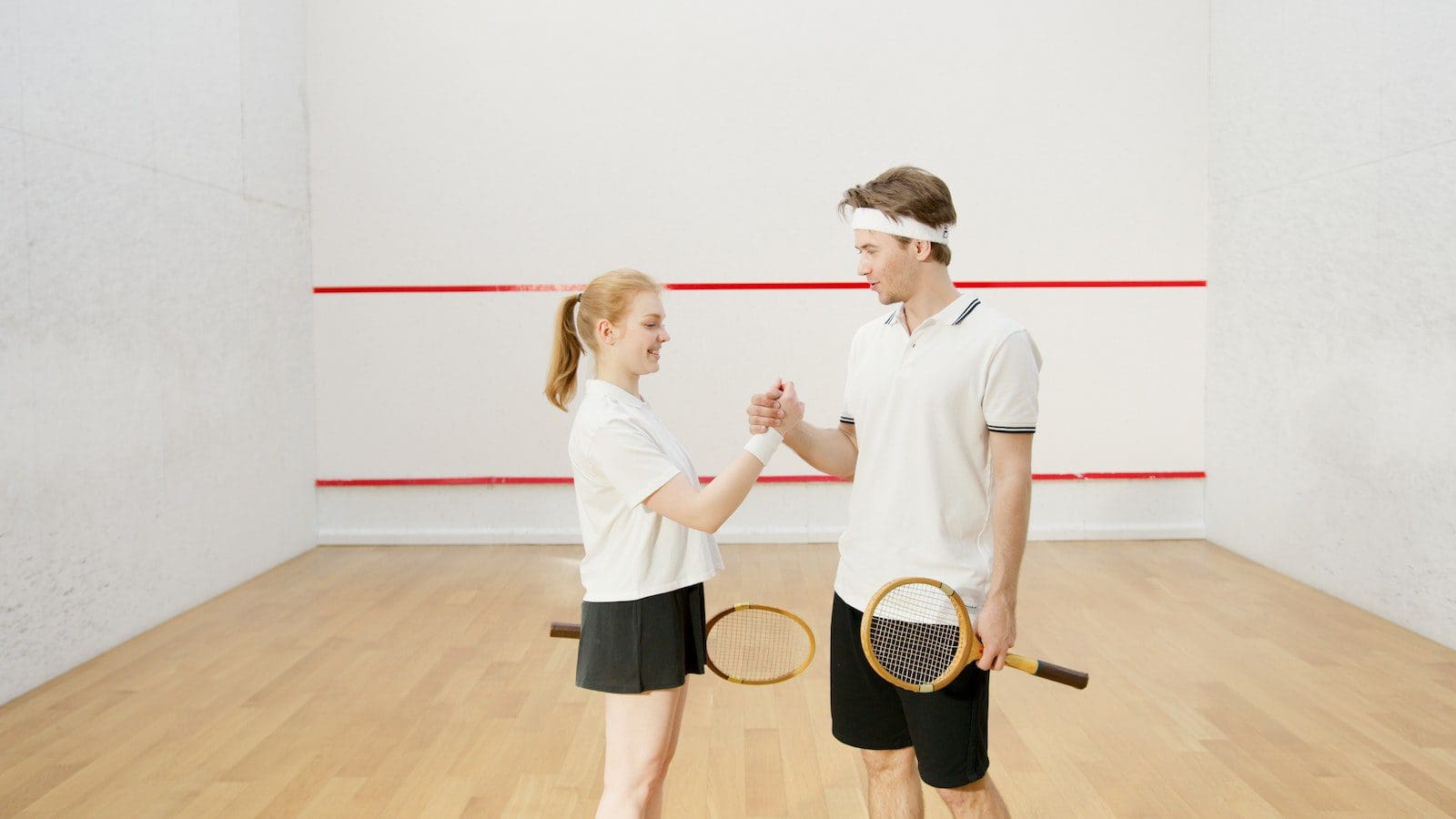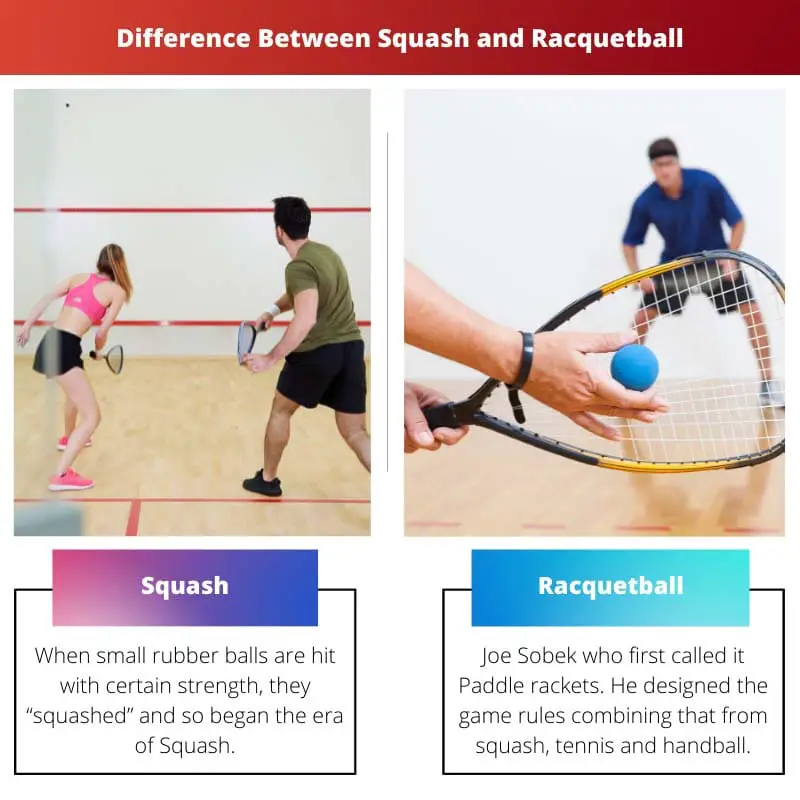Racket sports are a great way to indulge in some physical activities; you have a great range to choose from. Six main Racket-based games are played around the globe.
Among these six games, Squash and Racquetball are both played with hollow balls and are similar. However, it is best to start with their differences to know which suits one best.
Key Takeaways
- Squash is a racket sport played in an enclosed court, where players take turns hitting a small rubber ball against the walls, aiming to make the ball bounce twice before their opponent can return it.
- Racquetball is a similar racket sport, but with a larger ball, a shorter racket, and different court dimensions, resulting in a faster-paced game.
- Both squash and racquetball are indoor racket sports that involve hitting a ball against a wall, but they differ in their rules, equipment, and style of play.
Squash vs Racquetball
Squash is an indoor racquet sports which uses a smaller, softer ball and has a smaller court. squash is considered to be a more technique-focused and strategic game. Racquetball is an indoor racquet sports played with a ball and racquet. It uses a larger, harder ball and has a larger court.

Another crucial difference lies in the size of the Racquet. Squash is played with one that is 27 inches long and has a narrower structure, while Racquetball is played with a 22 inches tear drop-shaped racquet.
Another interesting difference is that the Squash racquet is spelt “Racket”, whereas Racquetball uses a Racquet.
Comparison Table
| Parameter of Comparison | Squash | Racquetball |
|---|---|---|
| Court dimensions | 32 ft x 21 ft x 18.5 ft | 40 ft x 20 ft x 20 ft. |
| Racquet size | 27 inches long | 22 inches long |
| The shape of the racquet | a narrow structure | teardrop shaped |
| Origin | England | America |
| Rules | Can stand anywhere in the serving area | It has a serving box where the player must confine |
What is Squash?
Squash which school kids from London originally invented, discovered that when small rubber balls are hit with a certain strength, they “squashed”, and so began the era of Squash.
This racket sport has become one of the most played sports in the world and is enjoyed by about 20 million people worldwide.
Squash lacked the space in its initial years, and the Harrow school kids adjusted to it. Even now, the game is played in close quarters where the first player hits the ball so that the second player cannot take a hit and thus loses points.
The court dimensions of a Squash game are 32 ft x 21 ft x 18.5 ft, and interestingly, the Racquet here is spelt just “Racket”. The ball in a squash game is smaller than that used in Racquetball and is made 39.5 to 40.5 mm in diameter.
A professional squash game is played for five rounds, each for 11 points. The winner has to win by a clear 2 points in a championship game. However, no matter its popularity, it is not yet included in Olympics tournaments.

What is Racquetball?
Racquetball was created by an American tennis player, Joe Sobek, who first called it Paddle rackets. He designed the game rules combining squash, tennis and handball.
The game gained popularity in England, and its evolution eventually sought out its present namesake Racquetball.
The game is played in a court whose dimensions are specifically 40 ft x 20 ft x 20 ft and uses a racquet of 22 inches which has a teardrop shape. It is played in both closed quarters or as an outdoor game.
The ball used in this game is a bouncy rubber ball of 2.25 inches in diameter and requires the player to don an eye guard to protect the eyes from the bouncing ball.
A professional Racquetball ball player also uses gloves for better grip and racquetball court shoes for enhanced forward and sideways movement. The service line and the short parallel line outline the service zone.
The game has a wide area to choose one’s service spot.
A racquetball tournament may use any colour of the ball, from red, green, black, blue and purple, depending on the rules set and the players playing.
For example, green and blue balls are designed to be the fastest, whereas black balls are used when senior citizens pay for them and are designed to be slow-paced.

Main Differences Between Squash and Racquetball
- The main difference between Squash and Racquetball is that size of a Squash court is 32 ft x 21 ft x 18.5 ft, while Racquetball is played in a court of 40 ft x 20 ft x 20 ft dimensions.
- Another crucial difference is Squash is played with rackets that are 27 inches long and has a narrower structure, while Racquetball is played with a 22 inches tear drop-shaped racquet.
- The ball in a squash game is smaller than that used in Racquetball and is made 39.5 to 40.5 mm in diameter, whereas Racquetball is played with a bouncy rubber ball of 2.25 inches.
- Another difference is that the Squash racquet is spelt “Racket”, whereas Racquetball uses a Racquet.
- Squash was originally invented by school kids from London, whereas American tennis player Joe Sobek created Racquetball.

- https://www.tandfonline.com/doi/abs/10.1080/00913847.1987.11702059
- https://www.koreascience.or.kr/article/JAKO201020163390984.page

This post could have included more about the professional aspects and leagues for both sports. It feels like a missed opportunity to delve deeper into their competitive nature.
I see your point, Alfie. It would be interesting to learn about the professional circuits and championship games associated with squash and racquetball.
The article provided a concise breakdown of the main differences between squash and racquetball. It’s a great starting point for people who want to explore these sports further.
The details provided here are fantastic for someone considering trying out a new racquet sport. I appreciate the comparison table; it’s very clear and easy to understand.
I think the post did a great job in breaking down the rules and differences between squash and racquetball. Very informative and well-researched.
Absolutely, Kelly. It’s refreshing to see a comprehensive comparison without any bias towards one sport over the other.
The historical background provided for both sports adds a fascinating layer to the comparison. It’s always interesting to learn about the origins of different sports.
As someone who has been playing racquetball for years, I found this article to be very accurate and nicely summarized. Great job on breaking down the key differences between squash and racquetball!
I can relate, Mstevens. It’s always a delight to come across a well-researched piece like this.
I think this article missed out on some crucial points about both sports. The comparison is not thorough enough to give a complete understanding.
I respectfully disagree, Collins. I believe the article conveyed the essential differences accurately. It doesn’t always have to be exhaustive to be informative.
The discussion about the origin and evolution of both sports is an interesting addition to this post. It provides a holistic view of their history.
I hadn’t considered the historical aspect until reading this article. It’s a valuable context to understand the development of squash and racquetball.
Definitely, Maria. Understanding the roots of these sports offers a deeper appreciation for their unique characteristics.
Racquet sports are an amazing way to stay fit and active, and this article laid out great details about the differences between squash and racquetball. Very informative and well-explained!
I completely agree with you, Imogen. This post is a great guide for people who are looking to start either of these sports.
The comparison table could have been more detailed, but overall, this article gives a good starting point for anyone considering playing squash or racquetball.
I understand your point, Keeley. Perhaps more detailed dimensions and specifications would enhance the comparison table further.